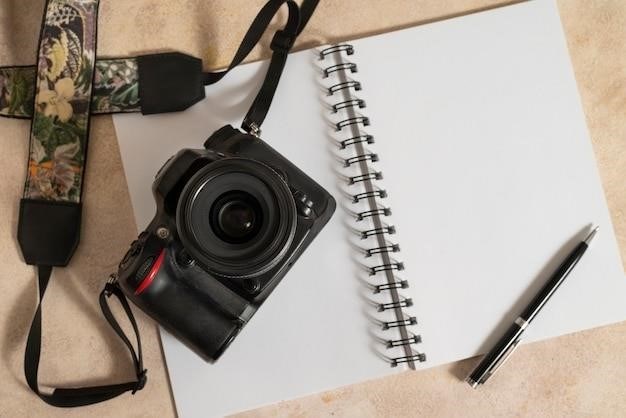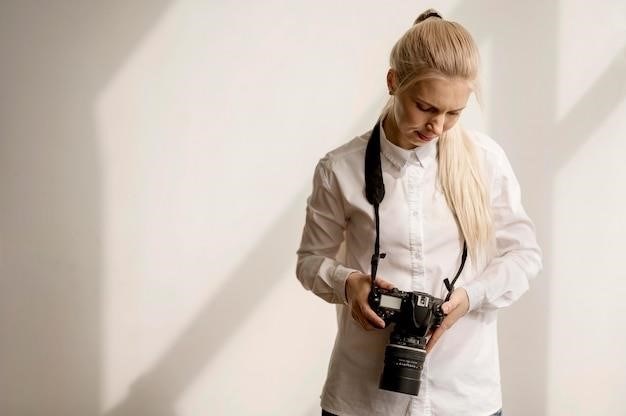Getting Started with Photography⁚ A Beginner’s Guide
Photography is a captivating hobby that allows you to capture moments, express creativity, and share your perspective with the world. This beginner’s guide will equip you with the fundamental knowledge and practical tips to embark on your photographic journey.
Introduction
Photography is an art form that allows you to capture moments, express creativity, and share your perspective with the world. Whether you’re a complete novice or have some experience, there’s always more to learn and discover in the realm of photography. This comprehensive guide will serve as your stepping stone, providing you with the essential knowledge and practical tips to embark on your photographic journey. From understanding basic camera settings to exploring composition techniques, we’ll cover everything you need to know to take your photography skills to the next level. So, grab your camera, get ready to experiment, and let’s dive into the exciting world of photography!
The Basics of Photography
At its core, photography is about capturing light. Understanding how light interacts with your camera sensor is fundamental to creating well-exposed images. The key elements that control light exposure are aperture, shutter speed, and ISO sensitivity. Aperture refers to the size of the opening in your lens, controlling how much light enters the camera. A wider aperture (smaller f-number) lets in more light, creating a shallow depth of field, which blurs the background and isolates your subject. A narrower aperture (larger f-number) allows less light, resulting in a greater depth of field, keeping both the foreground and background in focus. Shutter speed determines how long the camera’s shutter remains open, controlling how much light is captured. A faster shutter speed freezes motion, while a slower shutter speed allows for motion blur. ISO sensitivity measures how sensitive your camera’s sensor is to light. A higher ISO allows you to shoot in low-light conditions but can introduce noise or grain in your images. Mastering these basic elements forms the foundation of your photographic journey, enabling you to control light and create stunning photographs.
Understanding Your Camera
Familiarizing yourself with your camera’s features and functions is crucial for taking control of your photography. Start by exploring the basic controls, such as the shutter button, zoom lens, and viewfinder. Learn how to navigate the menu system and access settings like aperture, shutter speed, and ISO. Understand the different shooting modes available, like automatic, aperture priority, and manual, and experiment with each to find what works best for you. If you’re using a DSLR or mirrorless camera, familiarize yourself with the exposure triangle and how to adjust each element to achieve the desired exposure. Don’t be afraid to experiment with different settings and see how they affect your images. Practice using your camera in various situations and lighting conditions to build confidence and develop your skills. As you become more comfortable with your camera, you can explore more advanced features, such as custom settings, bracketing, and focusing modes, to enhance your creative possibilities.

Exposure Triangle
The exposure triangle is a fundamental concept in photography, representing the three key elements that determine the brightness of your image⁚ aperture, shutter speed, and ISO. Understanding and controlling these elements is essential for achieving well-exposed photographs. Aperture, measured in f-stops, controls the size of the lens opening, affecting the depth of field—the area in focus. A wider aperture (smaller f-number) creates a shallow depth of field, blurring the background and isolating the subject. A narrower aperture (larger f-number) produces a greater depth of field, keeping more of the scene in focus. Shutter speed, measured in seconds or fractions of a second, controls how long the shutter remains open, capturing light. A faster shutter speed freezes motion, while a slower shutter speed allows for motion blur. ISO, or film speed, determines the camera’s sensitivity to light. A higher ISO setting increases sensitivity, allowing for shooting in low light, but it can also introduce noise. The exposure triangle works in tandem, and adjusting one element affects the others. Experimenting with different combinations of aperture, shutter speed, and ISO will help you understand how they work together to create the desired exposure and capture the essence of your subject.
Composition
Composition is the art of arranging elements within your photograph to create a visually appealing and impactful image. It’s about guiding the viewer’s eye through the scene, creating balance, and conveying a sense of depth and story. A fundamental principle is the rule of thirds, which divides the frame into nine equal sections; Placing your subject along these intersecting lines or at their points of intersection often creates more dynamic compositions than centering your subject. Leading lines, such as roads, fences, or rivers, can draw the viewer’s eye towards the subject. Foreground elements can add depth and context to your image, while negative space, or empty areas in the frame, can help to highlight the subject and create a sense of balance. Experiment with different angles, perspectives, and compositions to find what works best for your subject and your vision. Remember, good composition is not about following strict rules but about creating a harmonious and engaging image that tells a story.
Lighting
Lighting is the foundation of a captivating photograph. Understanding how light interacts with your subject and the environment is crucial for achieving desired effects. Natural light, such as sunlight, offers a variety of options. Golden hour, the time shortly after sunrise or before sunset, produces warm, soft light that’s ideal for portraits and landscapes. Harsh midday sunlight can create strong shadows and contrast, which can be used creatively or softened with diffusers. Artificial light sources like flash, studio lights, and lamps provide more control. Direct flash can create harsh shadows, while bounce flash softens the light. Experiment with different light sources and positions to discover the best lighting for your subject and vision. Pay attention to the direction of light, its intensity, and its color temperature to create a desired mood and atmosphere in your photographs.
Shooting Modes
Your camera offers various shooting modes to control different aspects of exposure and focus. Understanding these modes allows you to adapt to diverse photographic situations. Auto mode is the simplest, where the camera automatically adjusts settings for optimal exposure. Program mode gives you control over a few settings while the camera manages the rest. Shutter-priority mode allows you to set the shutter speed, determining how long the shutter stays open, while the camera selects the appropriate aperture. Aperture-priority mode grants control over the aperture, which influences the depth of field, while the camera adjusts the shutter speed. Manual mode gives you complete control over both shutter speed and aperture, allowing for precise control over exposure. Understanding the different shooting modes empowers you to choose the best approach for your specific photographic needs.
Camera Settings
Mastering camera settings is crucial for achieving well-exposed and visually appealing photographs. ISO sensitivity controls the camera’s sensitivity to light, with higher ISO values allowing for shooting in low-light conditions but potentially introducing noise or graininess. Shutter speed determines how long the shutter remains open, affecting the motion blur in your images. A faster shutter speed freezes motion, while a slower shutter speed creates a sense of movement. Aperture controls the size of the lens opening, influencing the depth of field, or the area of the image that appears in focus. A wide aperture creates a shallow depth of field, blurring the background and isolating the subject, while a narrow aperture increases the depth of field, keeping more of the image in focus. White balance adjusts the color temperature of your image, ensuring accurate color reproduction. By understanding and adjusting these camera settings, you can achieve a variety of effects and capture stunning photographs.
Post-Processing
Post-processing is an essential part of the photography workflow, allowing you to enhance your images and achieve your desired aesthetic. While a well-captured photograph requires strong fundamentals, post-processing can refine and elevate your work. Using software like Adobe Photoshop or Lightroom, you can adjust brightness, contrast, color balance, and sharpness. You can also remove distractions, crop for better composition, and apply creative effects. Post-processing enables you to correct imperfections, enhance details, and express your artistic vision. It’s a powerful tool for enhancing your photography and creating stunning visuals. Remember to maintain a balance between editing and preserving the integrity of the original image, ensuring that your post-processing enhances rather than distorts the essence of your photograph.

Tips for Beginners
As you embark on your photographic journey, remember that practice is key to honing your skills. Embrace experimentation, explore different subjects and perspectives, and don’t be afraid to make mistakes. Learn from your experiences, and continuously seek new ways to improve your craft. To enhance your photographic eye, observe the work of photographers you admire, study their techniques, and analyze their composition, lighting, and storytelling. Attend workshops or online courses to gain deeper insights and guidance from experienced professionals. Engage with other photographers, share your work, and seek feedback to broaden your perspective and learn from their insights. Remember that photography is a journey of discovery, so enjoy the process of learning and growing as a photographer.
Resources for Further Learning
For those eager to delve deeper into the world of photography, a wealth of resources awaits. Online platforms such as YouTube, Skillshare, and Udemy offer a plethora of free and paid courses, tutorials, and workshops, covering various aspects of photography from camera settings to composition, lighting, and post-processing. Websites like Digital Photography School, PetaPixel, and Fstoppers provide informative articles, reviews, and photography tips for beginners and professionals alike. Explore photography books by renowned photographers, covering specific genres, techniques, or camera systems. Join online photography communities and forums to connect with other enthusiasts, share your work, and learn from their experiences. Engage with social media platforms like Instagram and Flickr to discover inspiring photographers, participate in challenges, and receive feedback on your images. Remember that continuous learning is crucial for growth in photography, so embrace the abundance of resources available to you and keep exploring.



